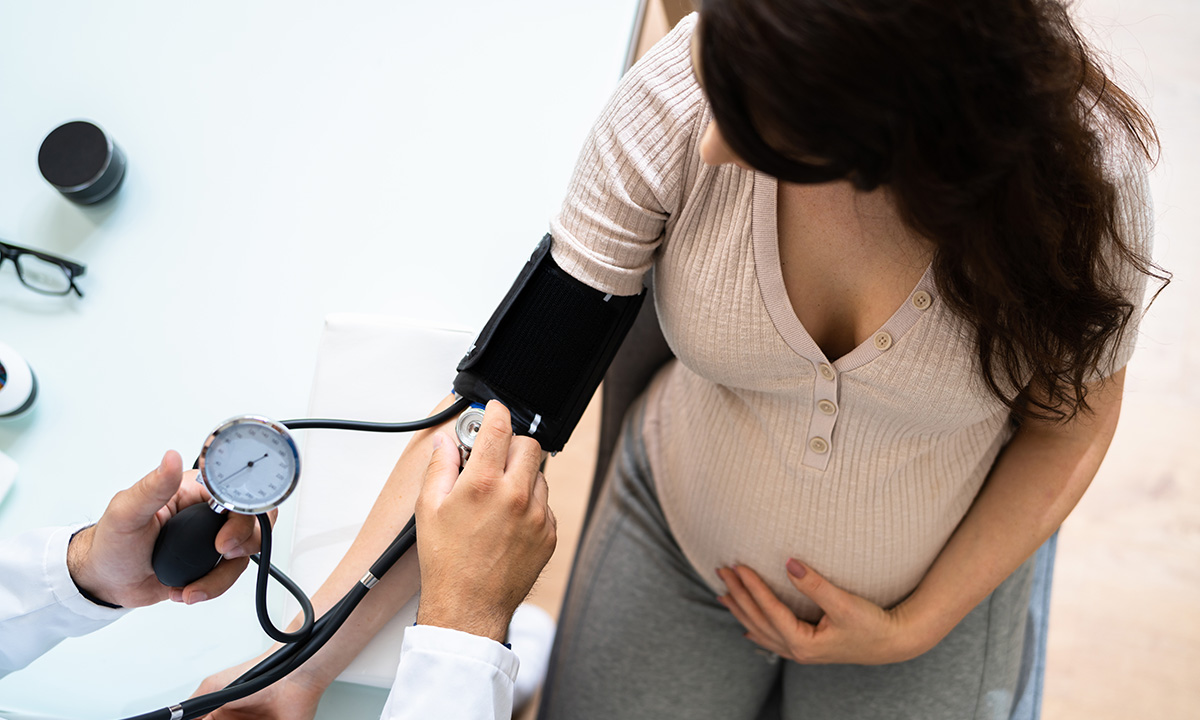
Preeclampsia is characterized by hypertension and one or more signs of physiologic dysfunction and is difficult to diagnose. A new ARUP Consult® topic aims to help clinicians order the right test at the right time.
ARUP Consult®, a free source of expert guidance in laboratory testing, has released a new topic on testing for preeclampsia, which is a serious pregnancy-related disorder that is characterized by hypertension and one or more signs of physiologic dysfunction. The new topic discusses the role of laboratory testing using angiogenic biomarkers recently cleared by the FDA to determine preeclampsia risk.
“The markers are specific to uteroplacental function, and the topic helps clinicians determine how the markers fit into the continuum of care with intended uses and test result interpretation [information],” said Kelly Doyle, PhD, DABCC, FADLM, medical director of Special Chemistry and Endocrinology at ARUP.
ARUP now offers the FDA-approved preeclampsia risk assessment assay, one of the first of its kind to become available, which measures the ratio between two angiogenic factors. An imbalance between those factors is associated with the development of preeclampsia.
“While the exact etiology of preeclampsia is not fully understood, the endothelial dysfunction and these angiogenic markers seem to play a specific role in preeclampsia pathogenesis,” Doyle said.
Because multiple organs are involved and presentation can vary greatly from case to case, a range of tests may be needed to diagnose preeclampsia, and the ARUP Consult topic includes a Quick Answers for Clinicians section to help providers choose the right test at the right time.
Preeclampsia remains one of the leading causes of maternal and infant mortality, resulting in more than 50,000 maternal deaths and 500,000 fetal deaths globally and affecting 2–8% of all pregnancies. The only remedy for preeclampsia is to deliver the baby and placenta. The condition typically develops between 20 weeks of gestation and delivery but can occur postpartum.
“Determination of the ratio between these two angiogenic factors aids in risk assessment for preeclampsia, and when used in the context of other clinical evaluations, can inform decisions on whether or not early delivery of the baby is needed,” said Heather Nelson, PhD, DABCC, medical director of Clinical Chemistry at ARUP.
A free educational resource, ARUP Consult is funded entirely by ARUP Laboratories. ARUP medical directors, who are active faculty members at the Spencer Fox Eccles School of Medicine at the University of Utah and its Department of Pathology, review and contribute to the content on ARUP Consult.
Users can subscribe to receive monthly emails about updates and additions to ARUP Consult. ARUP also welcomes feedback and suggestions via the Feedback page on arupconsult.com.
Learn more about ARUP’s preeclampsia risk assessment assay here.
Bonnie Stray, bonnie.stray@aruplab.com
















